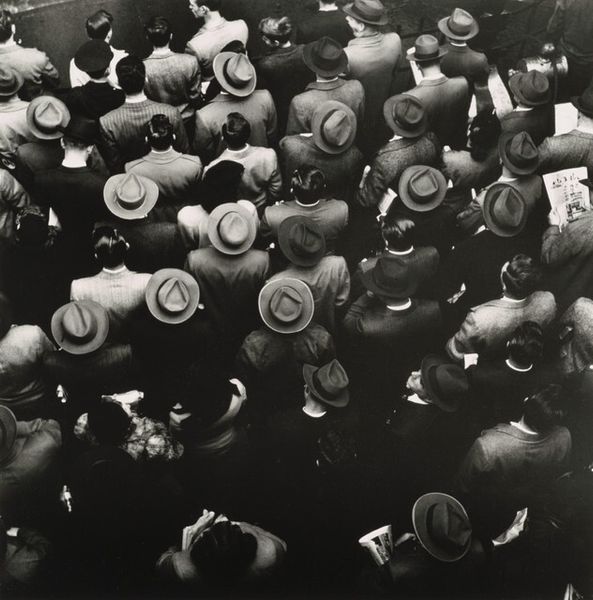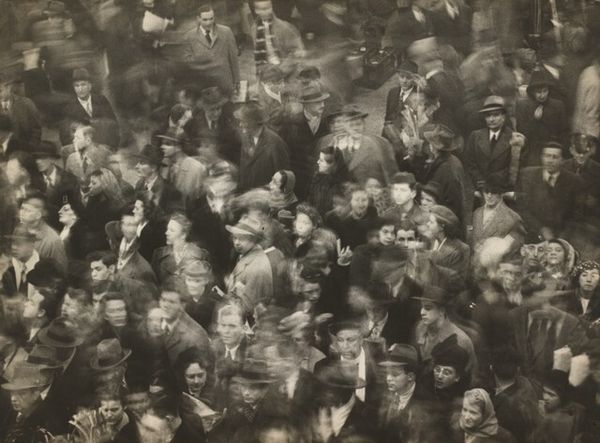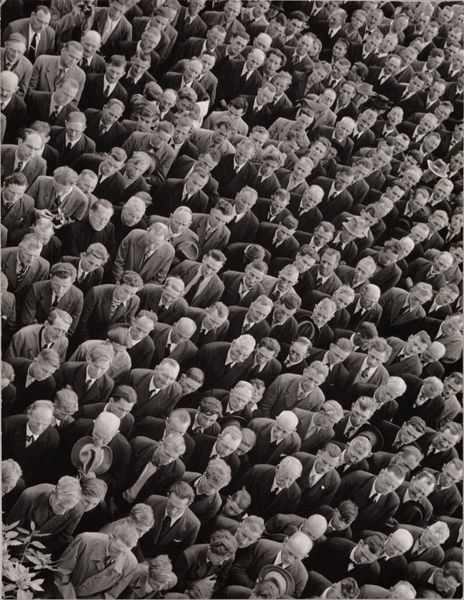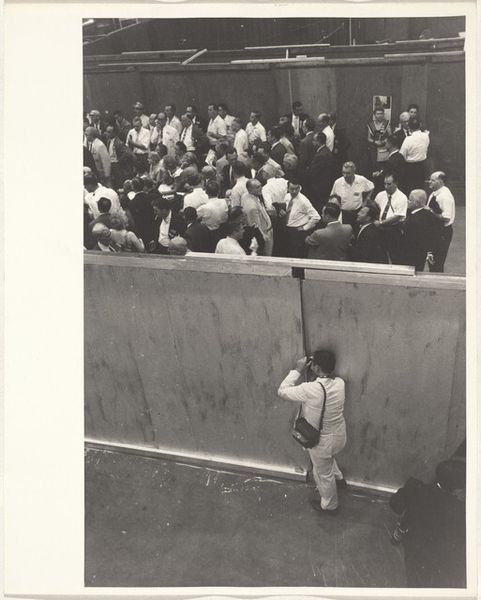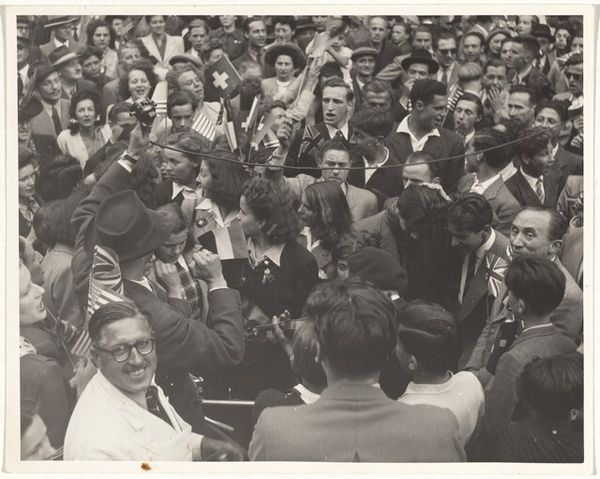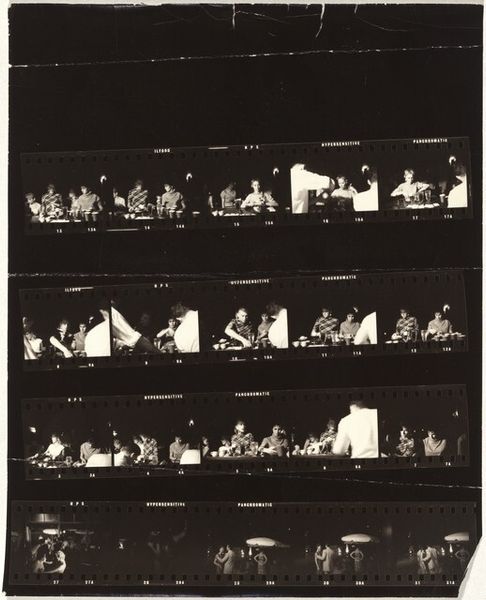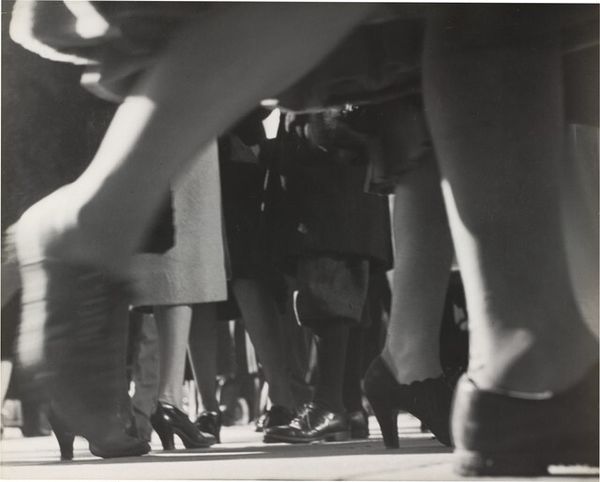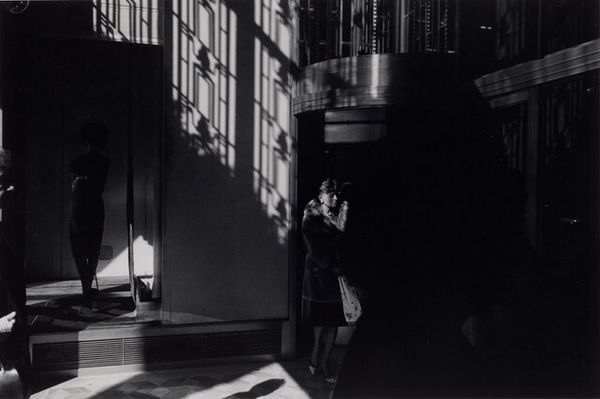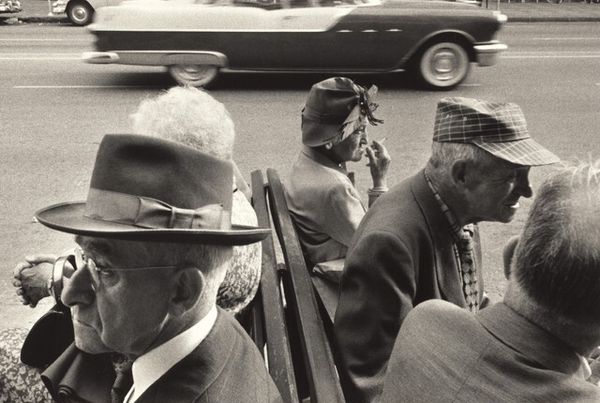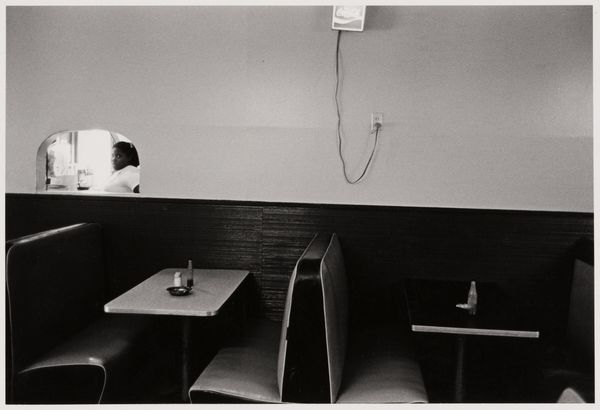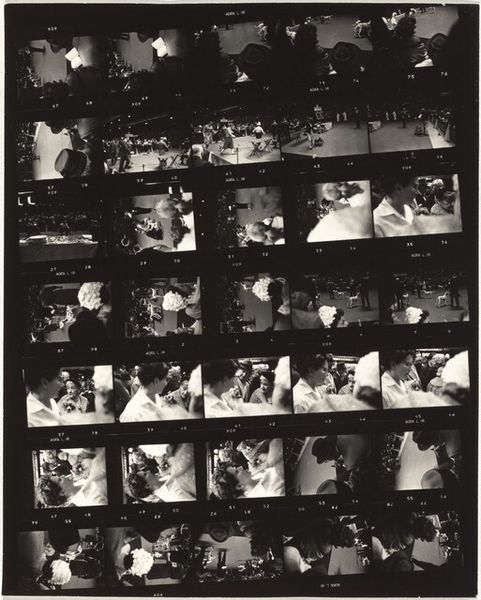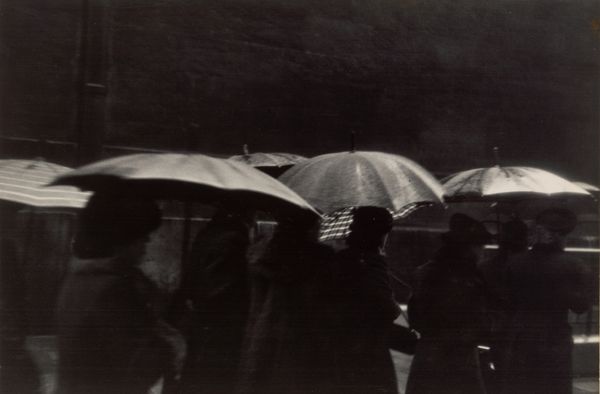
photography
#
portrait
#
black and white photography
#
black and white format
#
photography
#
black and white theme
#
postcolonial-art
#
black and white
#
monochrome photography
#
monochrome
#
monochrome
Copyright: Shirin Neshat,Fair Use
Editor: We are looking at "Fervor," a black and white photograph by Shirin Neshat, created in 2000. The composition, divided by this stark diagonal line, is really striking, isn’t it? What historical narratives are at play here? Curator: The visual segregation immediately brings to mind the socio-political landscape of Iran during that period. Neshat often explores the separation of genders within religious and public spaces, a dynamic intensely shaped by the Islamic Revolution. Editor: So, this division we see – women cloaked in black on one side, men in white shirts on the other – isn't just a composition choice; it’s reflecting something very real. What role did photographs like these have within Iran at that time, or even in the international view of Iran? Curator: They were incredibly potent. Neshat’s work circulated globally, prompting dialogue about cultural identity, power, and representation of Muslim women. But within Iran, her imagery faced complex receptions, triggering debates about authenticity, artistic license, and the responsibility of representing one's own culture. Think about it: Who gets to tell the story, and for whom? Editor: That makes me consider her artistic choices; her lens and how she, a woman in exile, captures these themes. How might that perspective influence the work? Curator: Exactly! Her outsider status granted a unique vantage point but also complicated her relationship with her subject matter. It underscores how an artist’s biography can become intertwined with interpretations of their art. What do you think of the gaze of the women portrayed in the photograph? Editor: Well, her eyes are really intense, very confrontational, so it makes me wonder what she’s thinking and how her gaze implicates me, the viewer, too. Thanks for shining a light on the nuances. Curator: And thank you for engaging deeply with the layered histories embedded within this powerful image.
Comments
No comments
Be the first to comment and join the conversation on the ultimate creative platform.
